Worried that your generator alone isn't enough to protect sensitive electronics? Fluctuations or startup delays can still cause issues. A UPS perfectly bridges this gap, ensuring truly seamless and clean power.
Yes, you absolutely can and often should connect a UPS (Uninterruptible Power Supply) to a generator. The UPS conditions the generator's output, provides instant battery power during the generator's startup delay, and protects sensitive equipment from interruptions or unstable power from the generator.
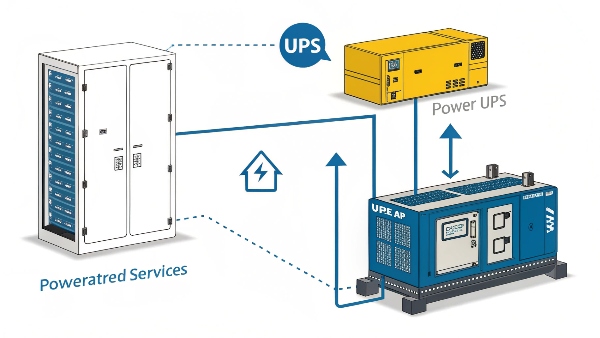
Transition Paragraph:
This combination is a cornerstone of robust power protection strategies. At Daopulse, we've designed our UPS systems for precisely this kind of teamwork. My experience over the last 10 years in the power solutions industry has consistently shown that uninterruptible power supplies and generators are a good match, offering layered defense against power problems. Let's delve into how this powerful duo works and why it's beneficial.
Can I connect UPS to a generator?
You have a generator for long outages, but what about that critical moment before it kicks in? Or the quality of power it supplies? This is where a UPS becomes essential.
Yes, connecting a UPS to a generator is a common and highly recommended practice. The UPS provides instant power, bridging the generator's startup gap, and filters the generator's output to protect sensitive electronics from potential fluctuations or unclean power.
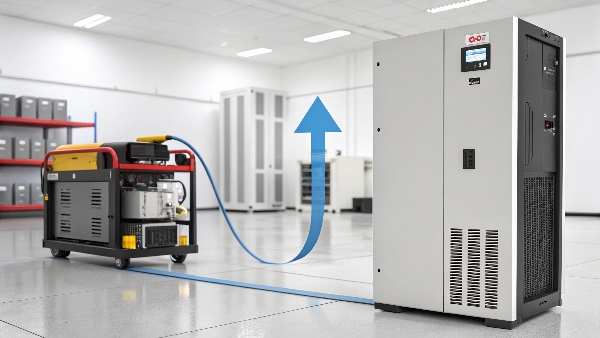
Dive deeper Paragraph:
Connecting a UPS to a generator is not just possible; it's often a best practice for comprehensive power protection. When utility power fails, a generator doesn't start instantly. There's a delay, typically from a few seconds to over a minute. During this gap, your connected equipment would lose power. A UPS fills this gap by immediately switching to its battery supply. Furthermore, some generators, especially older or portable models, might not produce "clean" power initially or consistently. Their output voltage and frequency can fluctuate, which can damage sensitive electronics. An online double-conversion UPS, like many we offer at Daopulse, continuously regenerates clean sine wave power, isolating your equipment from these generator-produced imperfections.
When pairing them, consider a few things:
- Generator Sizing: The generator must be sized to handle the UPS's load and the power needed to recharge the UPS batteries simultaneously.
- UPS Compatibility: Most modern UPS systems, particularly online double-conversion types, work well with generators. They are more tolerant of input frequency and voltage variations. We ensure our UPS units, both lead-acid and lithium battery based, are tested for such scenarios.
- Transfer Switch: An Automatic Transfer Switch (ATS) is crucial for managing the switch from utility to generator power.
Properly matched, a UPS and generator provide a nearly foolproof power solution. This combination shows that uninterruptible power supplies and generators are a good match for ultimate reliability.
| Consideration | Importance for UPS-Generator Pairing | Recommendation |
|---|---|---|
| Generator Capacity | Must support UPS load + battery recharge | Consult sizing guides or professionals |
| UPS Type | Online double-conversion preferred for power conditioning | Choose UPS designed for generator compatibility |
| Frequency Sync | UPS should sync with generator output frequency | Modern UPS units usually handle this well |
| Generator Output | Some generators have "dirty" power; UPS cleans it | True sine wave output UPS is ideal |
| ATS Integration | Essential for automated switchover | Ensure ATS and generator controller are compatible |
How do I power up my house with a generator?
Facing a power outage at home can be disruptive. How can you safely use a generator to keep essential appliances and lights running, maintaining some normalcy?
To power your house with a generator, you must use a correctly installed transfer switch. This device safely connects the generator to your home's electrical system and prevents dangerous backfeed into utility lines, protecting utility workers.
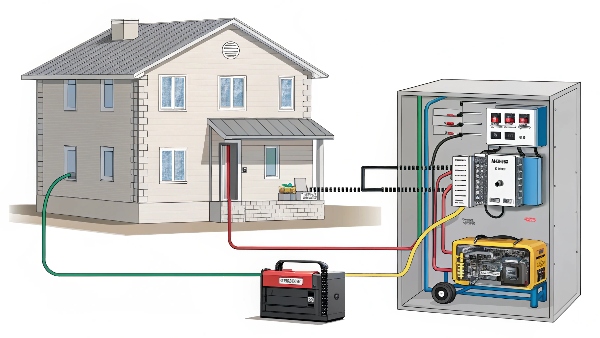
Dive deeper Paragraph:
Powering your house with a generator requires careful planning and, crucially, safe installation. The most important component is a transfer switch, either manual (MTS) or automatic (ATS). A qualified electrician should install this. The transfer switch isolates your home's electrical system from the utility grid before connecting to the generator. This is vital to prevent "backfeed," where electricity from your generator could travel back up the utility lines, endangering utility workers repairing the lines.
Here’s a general process:
- Generator Placement: Place the generator outdoors, at least 20 feet away from your house, with the exhaust pointing away from windows and doors to prevent carbon monoxide poisoning.
- Connection: Connect the generator to the transfer switch inlet box using a heavy-duty generator cord.
- Operation (Manual Transfer): If utility power fails, start the generator. Once it's running smoothly, go to your transfer switch and move the switch from "LINE" or "UTILITY" to "GENERATOR." This disconnects from the utility and connects to the generator feed.
- Load Management: Don't overload the generator. Power only essential circuits identified during the transfer switch installation. Some transfer switches allow you to select specific circuits.
- Refueling: Turn off the generator and let it cool before refueling.
While this setup powers parts of your house, very sensitive electronics like computers or home office equipment might still benefit from a small UPS inside the house. Even with generator power, a UPS can protect against minor fluctuations or the brief switchover times. This highlights how uninterruptible power supplies and generators are a good match even at a residential level for critical devices.
How does an UPS and generator work?
It might seem like a UPS and a generator do the same job. So, how do they actually function as a team to provide continuous, reliable power?
A UPS provides immediate, short-term battery power during an outage, while a generator starts up to provide long-term power. The UPS covers the critical switch-over gap, ensuring an uninterrupted power flow to connected equipment.
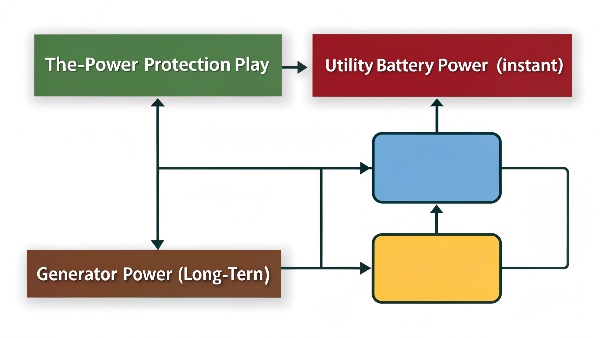
Dive deeper Paragraph:
A UPS and a generator work sequentially to ensure continuous power. Think of them as a two-stage defense system.
- Utility Power Normal: Under normal conditions, the UPS (especially an online model) constantly conditions the utility power and keeps its batteries charged. The generator remains off, in standby mode.
- Utility Power Fails: The moment utility power is lost or drops to an unacceptable level, the UPS detects this and instantaneously (within milliseconds) switches to its internal battery power. The connected critical load (servers, medical equipment, etc.) continues to run without even a flicker. This is the UPS's primary, immediate role.
- Generator Activation: Simultaneously, an Automatic Transfer Switch (ATS), which monitors the utility power, senses the outage. It then signals the backup generator to start. Generators typically need anywhere from 10 seconds to a minute (or more for very large units) to start, stabilize their speed, and produce the correct voltage and frequency.
- Power Transfer to Generator: Once the ATS verifies that the generator is producing stable power, it transfers the building's electrical load (including the UPS) from the (now non-existent) utility line to the generator. The UPS then switches from its battery back to its normal AC input mode, now powered by the generator.
- Generator Supplies Power: The generator now supplies power to the facility and also recharges the UPS batteries. It can run for as long as it has fuel.
- Utility Power Returns: When utility power is restored and stable, the ATS transfers the load back to the utility and signals the generator to shut down.
This seamless hand-off is why at Daopulse we emphasize that uninterruptible power supplies and generators are a good match; one provides the instant bridge, the other the long-term journey.
How a UPS System Works with a Backup Generator?
We know they work in sequence, but what are the specific technical benefits and interactions when a UPS system is paired correctly with a backup generator?
A UPS system refines generator power and ensures absolutely no interruption. It conditions the generator's output for sensitive loads and provides seamless power during the generator's start-up and transfer periods, enhancing overall power reliability.
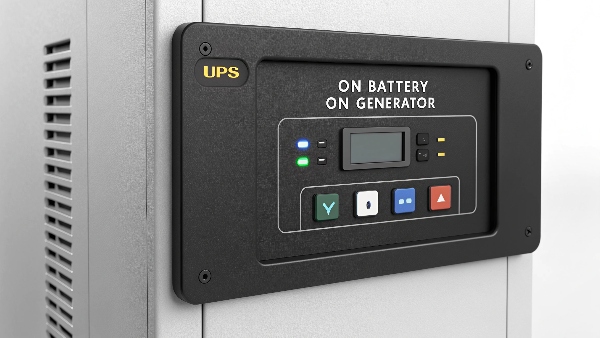
Dive deeper Paragraph:
The synergy between a UPS system and a backup generator provides a superior level of power protection. It's not just about filling the time gap; it's about power quality and comprehensive safeguarding. As a manufacturer, at Daopulse, we design our UPS units, including both our reliable lead-acid and advanced lithium battery solutions, with this partnership in mind.
Here’s how they complement each other:
- No-Break Power Transfer1: The UPS's primary role is to provide uninterruptible power. Without it, there would be a definite break in power while the generator starts and the ATS transfers the load. For IT systems, this break means a crash.
- Power Conditioning2: Generators, especially when starting or under fluctuating loads, may not produce perfectly stable "clean" sine-wave power. An online double-conversion UPS continuously recreates a perfect sine wave from its input (be it utility or generator), shielding sensitive electronics from sags, swells, frequency variations, or harmonic distortion from the generator. This is crucial for our clients, such as Procurement Managers in hospitals or data centers, who need to protect high-value equipment.
- Protection for the Generator: A UPS can act as a buffer, preventing sudden large load changes from directly impacting the generator, which can improve generator stability.
- Optimized Generator Life: By filtering power and managing loads, a UPS can contribute to a more stable operating environment for the generator.
- Extended Equipment Lifespan3: Consistent, clean power from the UPS, regardless of whether the source is utility or generator, reduces stress on electronic components, potentially extending their operational life.
- Frequency Regulation: Some generators might have slight frequency variations. A quality online UPS will accept a wider input frequency window and still output a precise frequency (e.g., 50Hz or 60Hz) to the load.
This comprehensive protection clearly demonstrates that uninterruptible power supplies and generators are a good match, creating a truly resilient power infrastructure.
| Feature | UPS Contribution When Paired with Generator | Benefit to Critical Load |
|---|---|---|
| Instant Power | Bridges generator start-up delay (seconds to minutes) | No interruption, no data loss, continuous operation |
| Power Conditioning | Filters voltage/frequency variations & noise from generator | Protects sensitive electronics, stable operation |
| Clean Sine Wave Output | Online UPS continuously regenerates output (even from generator power) | Optimal power quality for delicate equipment |
| Frequency Tolerance | Accepts wider input frequency range from generator | Stable output frequency even if generator varies slightly |
| Load Buffering | Can absorb minor load fluctuations before they hit the generator | Smoother operation for both generator and load |
Conclusion
Pairing a UPS with a generator is a smart strategy. It creates a robust, layered defense, ensuring clean, uninterrupted power for all your critical equipment during any outage.
-
Understanding No-Break Power Transfer is essential for ensuring uninterrupted power supply in critical systems. Explore this link for detailed insights. ↩
-
Power Conditioning is vital for protecting sensitive electronics. Discover more about its importance and functionality in this informative resource. ↩
-
Learn how UPS systems can extend the lifespan of your equipment, ensuring reliability and efficiency in operations. Check out this valuable information. ↩

